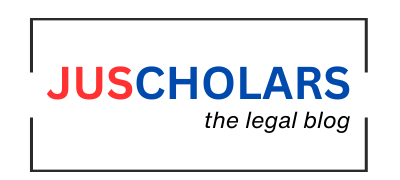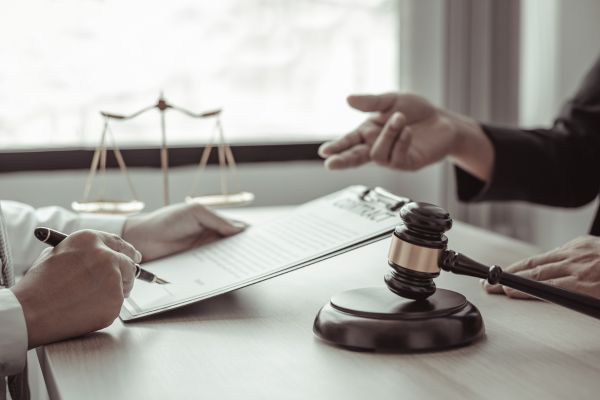Ever wondered what the term “Cybersquatting” really means? Let’s break it down! Cybersquatting is a combination of two words: Cyber, which refers to everything related to computers, the internet, and digital technology, and Squatting, which means unlawfully occupying something you don’t own. When you put them together, it describes the act of hijacking online real estate by registering or using domain names that rightfully belong to someone else. This is often done for profit or to exploit a brand’s reputation.
In many cases, cybersquatters register domains with the intention of later selling them to established businesses or brand owners for a significant profit. The goal is to capitalize on a domain name that is similar to a well-known brand, forcing the brand owner to either pay a high price to acquire it or to deal with the confusion or potential harm caused by the squatter’s use of the domain.
However, not all cybersquatters are motivated by profit alone. Some engage in malicious web squatting with more nefarious intentions. For instance, they may use similar domain names to create phishing pages, scams, or even fake surveys. These tactics are designed to deceive users into providing sensitive information, such as login credentials or financial data, ultimately leading to identity theft or fraud.
High-Profile Domain Name Battles: Trademarks vs. Cybersquatting
Cybersquatting has emerged as a critical legal issue in the digital age, with courts across jurisdictions addressing the unauthorized use of well-known trademarks in domain names. A landmark case in India, Yahoo! Inc. v. Akash Arora & Anr., set a precedent in protecting global trademarks, even when unregistered locally. The Delhi High Court recognized the distinctiveness of “Yahoo” and ruled that “Yahoo India” was deceptively similar to Yahoo Inc.’s trademark.
The court held that such resemblance could mislead users into believing an association existed between the two entities, thereby amounting to passing off. Yahoo Inc. successfully argued that Akash Arora was exploiting its goodwill, creating confusion among internet users. The judgment reinforced the principle that domain names, when deceptively used, could harm the goodwill and reputation of established entities, emphasizing the need for intellectual property protection in the evolving digital landscape. As a result, the court permanently restrained the defendant from using the name “Yahoo India.”
Similarly, in the United States, Nissan Motor Co. v. Nissan Computer Corporation, the legal battle over domain names further illustrated the complexities of cybersquatting and trademark dilution. Nissan Motor Co. and its subsidiary, Nissan North America, filed a lawsuit against Nissan Computer Corporation (NCC) and The Internet Center, Inc. (IC) over the domain names “nissan.com” and “nissan.net,” registered by NCC before the enactment of the Federal Trademark Dilution Act (FTDA). NCC, owned by Uzi Nissan, operated a computer sales business under his surname, complicating the dispute. Nissan Motor Co. alleged trademark dilution, infringement, and unfair competition, seeking a permanent injunction to prevent NCC’s commercial use of the domains and requesting their transfer. The court ruled in favor of Nissan Motor’s trademark dilution claim, stating that NCC’s use of the domain names reduced the distinctiveness of the automaker’s brand. However, it rejected the cybersquatting claim, allowing NCC to retain ownership of the domains based on its legitimate surname usage.
The court permitted noncommercial uses, such as posting family photos, but prohibited any content that exploited Nissan Motor’s goodwill for commercial gain. This case highlighted the delicate balance between trademark rights and individual domain ownership, shaping legal interpretations of cybersquatting and fair use in digital spaces.
The Evolving Threat of Cybersquatting: Trends and Challenges
Cybersquatting has evolved into a more sophisticated and deceptive threat, no longer limited to simply registering domains that mimic well-known brands. One of the most concerning trends is combosquatting, where attackers modify established trademarks by adding misleading terms like “security” or “payment,” making fraudulent domains appear legitimate and leading users into phishing scams.
Additionally, the rise of Internationalized Domain Names (IDNs) and homograph attacks has further complicated the landscape, allowing cybercriminals to create lookalike websites using visually identical characters from different languages. These deceptive tactics make it increasingly difficult for users to distinguish between genuine and malicious sites, heightening the risk of data breaches and financial fraud.
Adding to the challenge is the role of human error, as employees and everyday users often lack the cybersecurity awareness needed to identify suspicious domains, making them easy targets for phishing schemes. Furthermore, third-party risks amplify the problem, as businesses rely on external vendors who, if compromised, can expose an entire network of organizations to cybersquatting attacks. Traditional security measures often fail to detect these deceptive domain registrations, while legal and regulatory frameworks make reclaiming maliciously registered domains a complex and costly process
Cybersquatting Protection: Quick Tips for Brand Safety
- Register and Trademark Your Domain: The first step to protecting your brand in the digital world is securing your domain. Registering your domain for extended periods not only locks it down but also discourages cybersquatters from snatching it up. Set up electronic alerts to remind you when it’s time to renew your registration. Don’t forget to trademark your domain—this gives you legal ownership and the power to fight back if someone tries to exploit your brand.
- Claim Common Misspellings of Your Domain: You can’t register every possible variation of your domain name, but you can certainly grab the most common misspellings before a cybersquatter does. Tools like Domain Name Misspellings or other online services can help you spot common typos or variants. By securing these misspellings, you’ll protect your brand from those who might try to deceive users with misleading sites that look too similar.
- Boost Your Email Security with DMARC, SPF, and DKIM: Cybercriminals don’t just target your website—they also go after your email. Enabling DMARC, SPF, and DKIM is a smart way to safeguard your organization’s email system from spoofing and phishing attempts. These tools ensure that only legitimate messages come from your domain, making it easier for recipients to trust your communications and preventing cybercriminals from impersonating your brand.
- Send Cease and Desist Letters: If you find yourself up against a cybersquatter, a cease and desist letter can be your first line of defense. This formal letter outlines your legal rights to the domain and requests its immediate transfer. More often than not, the threat of legal action is enough to convince the cybersquatter to hand over the domain without the need for a costly court case.
- Consider Buying the Domain: In some situations, buying the domain outright from the cybersquatter may be the quickest and most efficient solution. While it might feel frustrating to give in to their demands, it can save you time and money compared to navigating the complexities of legal disputes. Just ensure the transaction is handled legally to avoid future headaches.
Conclusion
In conclusion, cybersquatting is a growing challenge that can seriously harm brands and their digital presence. With the internet being a vast space for business and personal identities, the unauthorized registration of domain names that mimic well-known brands is not just a legal issue but also a security concern. As the digital landscape evolves, cybersquatters are finding more creative ways to deceive users and profit from brand confusion.
To protect your brand, it’s crucial to be proactive. Registering and trademarking your domain name, securing common misspellings, and improving your email security are foundational steps in minimizing risk. Additionally, understanding the legal avenues available, such as sending cease and desist letters or negotiating domain purchases, can help resolve disputes efficiently.
Cybersquatting may seem like a technical issue, but it’s ultimately about protecting your reputation in an increasingly digital world. By staying aware and taking preventive measures, businesses can safeguard their online presence and maintain trust with their customers, ensuring their brands stay secure in a constantly changing digital environment.
Author: Varsha Singh is a 2nd year student at Government Law College, Mumbai.






